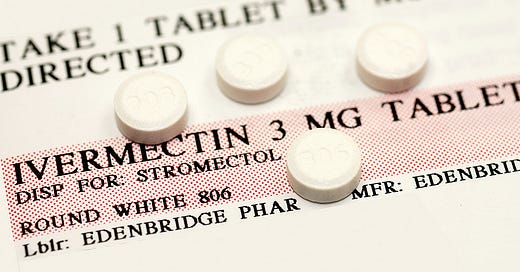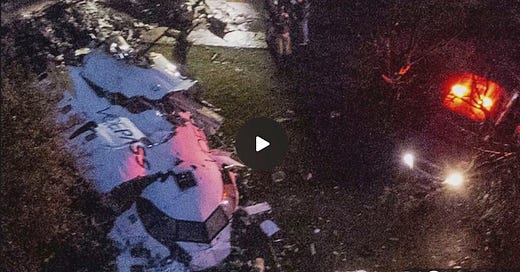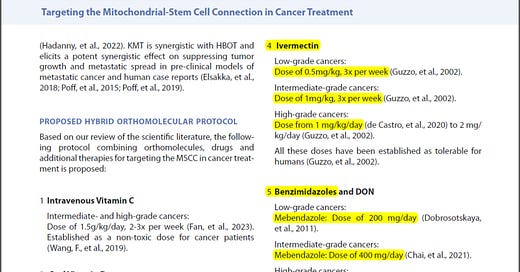
Excerpted from The Fauci Covid-19 Dossier by Dr. David E. Martin:
NIAID’s Director, Dr. Anthony Fauci is listed as an inventor on 8 granted U.S. patents. None of them are reported in NIAID, NIH, or GAO reports of active licensing despite the fact that Dr. Fauci reportedly was compelled to get paid for his interleukin-2 “invention” – payments he reportedly donated to an unnamed charity.[24]
Of the 21 patents listed in the U.S. Food and Drug Administration’s (FDA) Orange book itemized in the GAO report, none of Dr. Anthony Fauci’s patents are listed. Furthermore, none of the NIAID patents are listed despite clear evidence that Gilead Sciences and Janssen Pharmaceuticals (a division of Johnson & Johnson) have generated over $2 billion annually from sales that were the direct result of NIAID funded science. Missing from the GAO report are 2 patents for Velclade® which has been generating sales in excess of $2.18 billion annually for several years. None of the patents for Yescarta® are listed in the GAO report. None of the Lumoxiti® patents are listed in the GAO report. None of the Kepivance® patents are listed in the GAO report. In violation of 37 USC §410.10 and 35 USC §202(a), over 13 of the 21 patents in the GAO report fail to disclose government interest despite being the direct result of NIH funding.
Dr. Anthony Fauci’s Own Patent Track Record:
US Patent 6,190,656 and 6,548,055 Immunologic enhancement with intermittent interleukin-2 therapy
A method for activating a mammalian immune system entails a series of IL-2 administrations that are effected intermittently over an extended period. Each administration of IL-2 is sufficient to allow spontaneous DNA synthesis in peripheral blood or lymph node cells of the patient to increase and peak, and each subsequent administration follows the preceding administration in the series by a period of time that is sufficient to allow IL-2 receptor expression in peripheral or lymph node blood of the patient to increase, peak and then decrease to 50% of peak value. This intermittent IL-2 therapy can be combined with another therapy which targets a specific disease state, such as an anti-retroviral therapy comprising, for example, the administration of AZT, ddI or interferon alpha. In addition, IL-2 administration can be employed to facilitate in situ transduction of T cells in the context of gene therapy. By this approach the cells are first activated in vivo via the aforementioned IL-2 therapy, and transduction then is effected by delivering a genetically engineered retroviral vector directly to the patient.
This application is a continuation of U.S. patent application Ser. No. 08/487,075, filed Jun. 7, 1995, now abandoned, which is a continuation in part of U.S. patent application Ser. No. 08/063,315, filed May 19, 1993, now issued as U.S. Pat. No. 5,419,900, and U.S. patent application Ser. No. 08/452,440, filed May 26, 1995, now issued as U.S. Pat. No. 5,696,079, which is the National Stage filed under 35 USC 371 of PCT/US94/05397, filed May 19, 1994, the contents of which are incorporated herein by reference.
Filed May 19, 1993
Issued a Final Rejection January 20, 1998. Rejected after abandonment August 14, 1998 and April 12, 1999. Reduced and modified claims granted May 8, 2000.
This family of patents was the basis of Fauci’s lie to the British Medical Journal in which he falsely stated:
“Dr Anthony Fauci told the BMJ that as a government employee he was required by law to put his name on the patent for the development of interleukin 2 and was also required by law to receive part of the payment the government received for use of the patent. He said that he felt it was inappropiate (sic) to receive payment and donated the entire amount to charity.”[25]
He was not “required by law” to commit fraud on the patent office and then get paid for it!
US Patent 6,911,527 HIV related peptides
This invention is the discovery of novel specific epitopes and antibodies associated with long term survival of HIV-1 infections. These epitopes and antibodies have use in preparing vaccines for preventing HIV-1 infection or for controlling progression to AIDS.
Filed May 6, 1999
Rejected as unpatentable January 22, 2003. Issued with a final rejection on July 15, 2004 after submitting reconsideration requests. Modified and restricted claims allowed September 29, 2004.
US Patent 7,368,114 Fusion protein including of CD4
Novel recombinant polypeptides are disclosed herein that include a CD4 polypeptide ligated at its C-terminus with a portion of an immunoglobulin comprising a hinge region and a constant domain of a mammalian immunoglobulin heavy chain. The portion or the IgG is fused at its C-terminus with a polypeptide comprising a tailpiece from the C-terminus of the heavy chain of an IgA antibody ara tailpiece from a C-terminus of the heavy chain of an IgM antibody. Also disclosed herein are methods for using these CD4 fusion proteins.
Filed October 24, 2002
Rejected as unpatentable August 18, 2006. Paid appeal to overturn examiner’s findings February 15, 2007. Rejected again May 11, 2007. On October 10, 2007 applicants further narrowed the construction of what was clearly not a patent and the USPTO granted less than half the claims that had been sought in the original filing.
US Patent 9,896,509, 9,193,790 and 9,441,041 Use of antagonists of the interaction between HIV GP120 and .alpha.4.beta.7 integrin Methods are provided for the treatment of a HIV infection. The methods can include administering to a subject with an HIV infection a therapeutically effective amount of an agent that interferes with the interaction of gp120 and .alpha.4 integrin, such as a .alpha.4.beta.1 or .alpha.4.beta.7 integrin antagonist, thereby treating the HIV infection. In several examples, the .alpha.4 integrin antagonist is a monoclonal antibody that specifically binds to a .alpha.4, .beta.1 or .beta.7 integrin subunit or a cyclic hexapeptide with the amino acid sequence of CWLDVC. Methods are also provided to reduce HIV replication or infection. The methods include contacting a cell with an effective amount of an agent that interferes with the interaction of gp120 and .alpha.4 integrin, such as a .alpha.4.beta.1 or .alpha.4.beta.7 integrin antagonist. Moreover, methods are provided for determining if an agent is useful to treat HIV.
Rejected May 22, 2017 as Double Patenting. In their response, the applicants acknowledge the illegal act and seek only those components of their application that extend beyond the life of the issued patents. On October 11, 2017, the limited claims were issued.
A sample of the convoluted flow of funds that evades public disclosure.
U.S. Patent 8,999,351 was issued to Tekmira Pharmaceuticals Corporation in Burnaby, British Columbia. In their patent, they disclose that their research was supported by a grant from the National Institute of Allergy and Infectious Disease (Grant HHSN266200600012C). Ironically, this $23 million grant was awarded in 2006 to Alnylam Pharmaceuticals, Inc., not to Tekmira.[26]
In 2012, Alnylam agreed to pay Tekmira $65 million to settle legal disputes including a $1 billion damages claim for “relentless and egregious” misappropriation of Tekmira’s trade secrets. From the patent filing’s earliest priority of November 10, 2008, there is no public record stating Tekmira as the beneficiary of this NIAID grant. Notwithstanding, the lipid nanoparticle technology developed from this grant is the technology now used in the Moderna COVID-19 intervention. In their 10-Q filing, Alnylam reports to have a license to technology from Arbutus – formerly Tekmira –which has accused Acuitas of misappropriating trade secrets and licensing them to Moderna and Pfizer’s collaboration with BioNTech.
Additional references can be found at:
https://www.ott.nih.gov/nih-and-its-role-technology-transfer
https://www.accessdata.fda.gov/drugsatfda_docs/appletter/2017/206288Orig1s000TAltr.pdf
https://www.gao.gov/assets/720/710287.pdf
https://grantome.com/search?q=%22National%20Institute%20of%20Allergy%20and%20Infectious%20Diseases%22
24 https://www.ncbi.nlm.nih.gov/pmc/articles/PMC545012/
25 Ibid.
26 https://www.technologynetworks.com/genomics/news/alnylam-awarded-23-million-us-government-contract-to-develop-rnai-therapeutics- 186097
Fauci/COVID-19 Dossier CC-BY-NC-SA Dr. David E. Martin 14”








